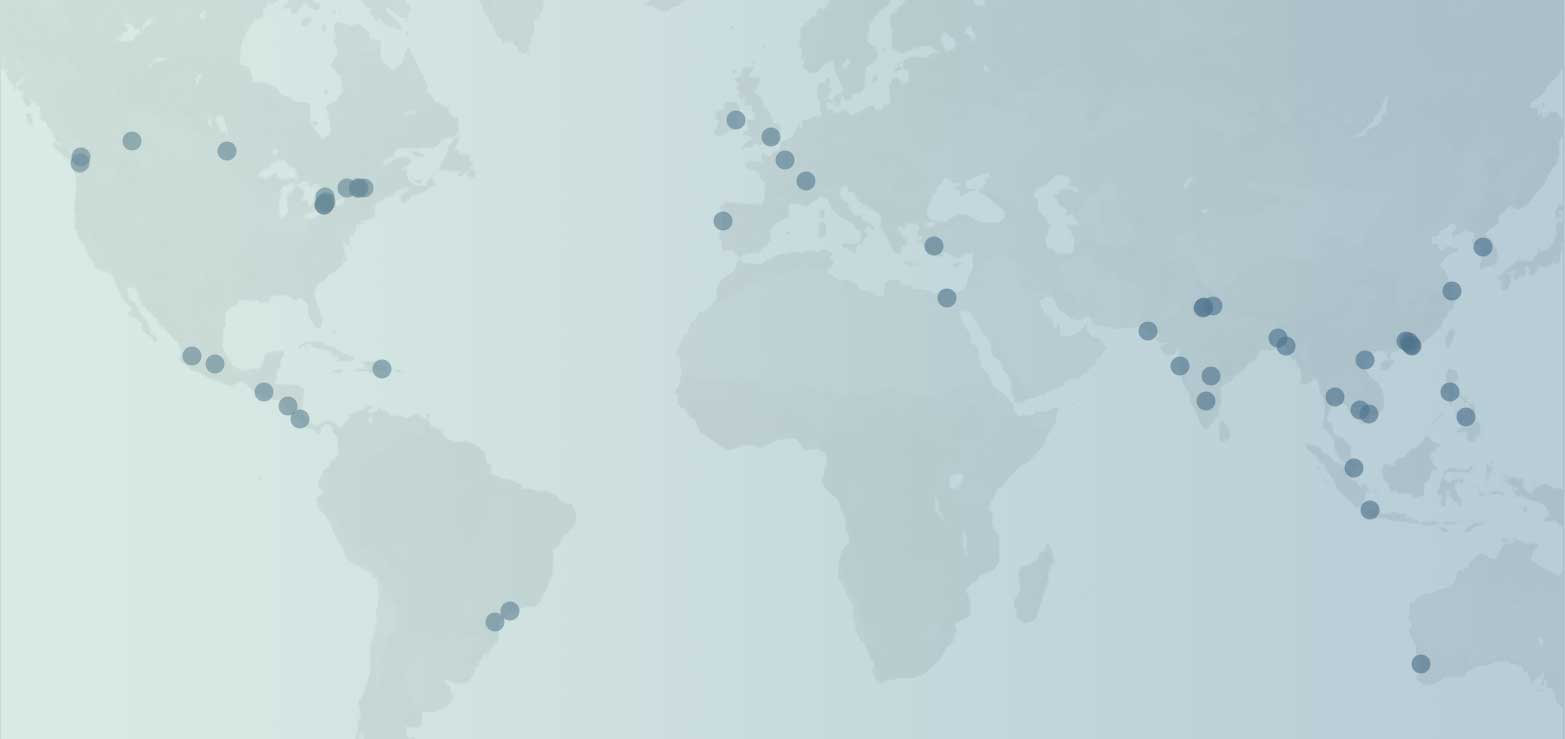 The outbreak in China
The outbreak in China
Anne Wethington, our International Specialist, happened to be in the United States at the end of January when she got the phone call. “We were managing the logistics for furniture that was produced in China and scheduled to deliver between late February and early March to various projects located in India and the Philippines. Because of COVID-19, Chinese New Year holidays were extended, factories were closed, and travel restrictions were quickly enforced,” said Anne. It was a stunning and surreal turn of events.
Anne’s portfolio of business spans 32 countries and nearly 20 years, leading and delivering furniture projects for our clients with global needs. She was grounded twice in 2011 while on trips to source and manage projects; during the earthquake and tsunami in Japan, and later that year she was stuck in London during the volcano eruption in Iceland. Anne and our global team have managed projects through strikes in foreign countries and ports, and through natural disasters such as typhoons.
The COVID-19 epidemic is a disruption unlike anything she’s experienced before. The World Health Organization designated COVID-19 as a Public Health Emergency of International Concern, one that has fueled an economic crisis, and a crisis of confidence. The pace of spread has served to destabilize supply chains that are largely global, and the effort to flatten the curve has shifted demand from consumer goods to medical supplies.
COVID-19 disrupts manufacturing, closes borders
“Our global team acted quickly to grasp the magnitude of the situation. We all worked a full U.S. day, then we would connect with our international counterparts so that the work could continue uninterrupted all night,” notes Anne. “There was so much new information every day, and no playbook to work from. We were creating a process as we went, but we were doing it together.”
The team identified and assessed the health of the project team members, the status of various furniture manufacturer partners, confirm project impacts, and inform U.S. and Asia leadership. “Staying aligned was critical to managing risk and setting realistic expectations,” said Anne.
As the impact of COVID-19 spread across the world, manufacturers based in Europe, India, Malaysia and the United States closed due to country mandates. “By Mid-March, the Philippines enforced the ‘enhanced community quarantine’ until the end of April, and India enforced a national lockdown until May 5, 2020, and these rolling restrictions created a scenario we hadn’t seen before, where none of the manufacturers we work with knew if they would be operating the following week,” says Anne.
Businesses in Asia provide insight on what economic recovery, and workplaces, could look like
China’s place in the curve is providing insight on what a recovery might look like, even as the country continues fighting to contain further spread. For example, China was an early adopter of working-from-home practices, and their manufacturing sector is back to operating at full capacity.
Using China as the epicenter, the surrounding countries are quickly calculating how to re-ignite their economies by ensuring workers feel safe returning to work, employers are aligned within any new regulations, and businesses can access the capital they need to remain healthy.
What is now apparent is that the impact of physical distancing and shifting economic principles has tested business continuity plans. What’s less apparent is if businesses will fundamentally change how they operate in the future.
Workplaces are preparing for a ‘new normal’
At Atmosphere, we have three key areas of interest, what might a post-COVID-19 workplace look like and how will we advice our clients, what will our own workplaces look like in the future, and should we adjust how we operate in order to manage risk differently? In order to reconcile our workplace and workforce strategy, we asked Anne specifically for insight on what companies in Asia are considering.
“Following SARS, workplaces in Asia did not return to normal operations for 3 – 6 months, so the trend now is to plan both short- and long-term strategies because this time around, COVID-19 has created a ‘new normal’,” says Anne. She cites as examples, programs that address health assessments, such as temperature and body scanners, and facility practices such as hygienic protocols, enhanced cleaning programs, and physical distancing efforts such as seating arrangements and work shifts. “Our clients that have international bases of business are moving very fast to prepare their workplaces for post-pandemic conditions, as well as update their disaster preparedness and business continuity plans. This situation has led to a dramatic re-thinking of what’s possible,” notes Anne.
A post-COVID-19 workplace will need to support new ways of working, new protocols, and address anxieties of returning workers. Jim Keane, President and CEO of Steelcase notes, “As we navigate what’s next, our solutions are holistic and consider not just furniture, but also materials, technology, planning paradigms and even behaviors and protocols.” Our international clients are engaging us for design solution to retrofit environments as they bring workers back, and longer-term planning for reconfigurations that incorporate new technology integrations and real estate strategies.
About Anne Wethington
Anne is a specialist in international furnishings projects, focused on major brands with global needs. She leads a project support team that evaluates manufacturers around the world to achieve cost savings; manages sourcing, delivery and services; and applies their experience with local cultures and regulations.

